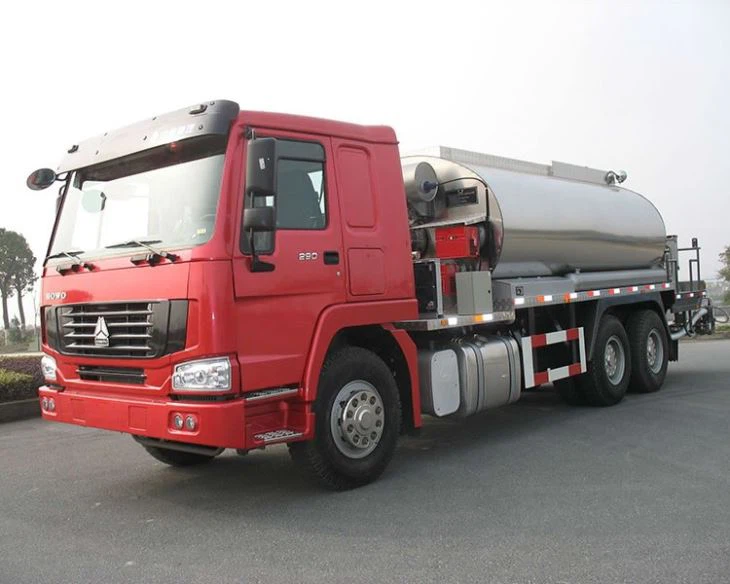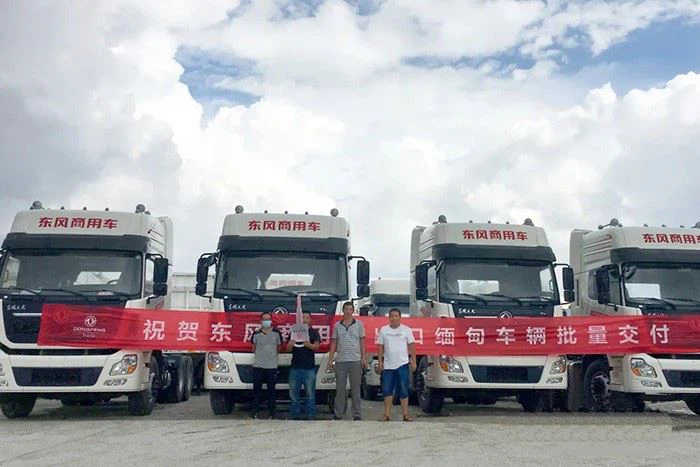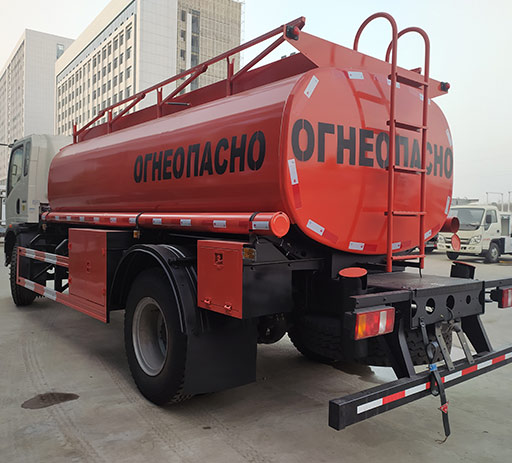Street Sweeping Trucks: Essential Tools for Urban Cleanliness

Street sweeping is a vital process in maintaining clean and healthy urban environments. At the heart of this process are street sweeping trucks, specialized vehicles designed to collect debris and pollutants from road surfaces. In this article, we will explore the various types of street sweeping trucks, their components, the technology involved, and their benefits to cities. We will also cover the operational aspects, practical tips for choosing the right truck, and answer common questions related to street sweeping trucks.
Understanding Street Sweeping Trucks
Street sweeping trucks are vehicles equipped with mechanical brooms and vacuum systems designed to clean roads, parking lots, and other paved areas. Their primary purpose is to remove litter, leaves, dirt, and debris, contributing to a cleaner and safer urban environment.
The Importance of Street Sweeping
Regular street sweeping helps prevent pollutants from entering storm drains, reducing water pollution in local waterways. Additionally, clean streets enhance the aesthetic appeal of neighborhoods, promote public health by reducing allergens, and can even decrease road maintenance costs.
How Street Sweeping Trucks Work
Street sweeping trucks typically utilize a combination of sweeping and vacuuming technologies. The main components of these trucks include:
- Broom System: Rotating brushes that sweep debris into the path of the vacuum.
- Vacuum System: A suction mechanism that collects debris into a hopper.
- Water System: Sprays water to minimize dust and improve sweeping efficiency.
- Control System: Allows the operator to adjust the settings for different cleaning tasks.
Types of Street Sweeping Trucks
There are various types of street sweeping trucks, each designed for different tasks and environments. Understanding these types can help municipalities choose the right equipment for their specific needs.
1. Mechanical Broom Sweepers
Mechanical broom sweepers are the most common type of street sweeping truck. They use rotating brooms to sweep debris into a collection area. These sweepers are efficient for collecting larger debris and are commonly used in residential areas.
Pros of Mechanical Broom Sweepers
- Effective at collecting large debris.
- Cost-effective for routine maintenance.
Cons of Mechanical Broom Sweepers

- Less effective for fine dust and small particles.
- Can kick up dust if not used with a water system.
2. Vacuum Sweepers
Vacuum sweepers utilize powerful suction to collect debris. They are ideal for urban environments where fine dust and smaller particles need to be addressed.
Pros of Vacuum Sweepers
- Highly effective at dust control and removing fine debris.
- Less environmental impact due to dust emissions.
Cons of Vacuum Sweepers
- Higher initial investment and operating costs.
- May struggle with larger debris unless equipped properly.
3. Regenerative Air Sweepers
Regenerative air sweepers combine a vacuum system with high-pressure air jets to dislodge debris and dust from the surface. They are effective in a variety of settings, including highways and commercial areas.
Pros of Regenerative Air Sweepers
- Efficient for fine dust and small particles.
- Lower water use compared to traditional methods.
Cons of Regenerative Air Sweepers
- Can be more expensive than mechanical broom sweepers.
- Requires skilled operators for optimal performance.
4. Electric Street Sweepers
With the growing emphasis on sustainability, electric street sweepers are becoming more common. These vehicles operate using electric power, reducing emissions and noise.
Pros of Electric Street Sweepers
- Environmentally friendly with zero emissions.
- Quieter operation, ideal for early morning and night cleaning.
Cons of Electric Street Sweepers
- Limited range compared to fuel-powered vehicles.
- Higher acquisition cost might deter municipalities.
Key Features to Consider When Choosing a Street Sweeping Truck
Selecting the right street sweeping truck is essential for effective maintenance and cleaning. Here are key features to consider when making a choice:
1. Sweeping Technology
Understanding the technology of the sweeper—mechanical, vacuum, or regenerative air—will impact the effectiveness of cleaning based on the area’s needs.
2. Capacity
Consider the capacity of the truck’s hopper. Larger hoppers reduce the frequency of disposal trips, which can save time and improve efficiency.
3. Maneuverability
Choose a model that is easy to operate in tight urban spaces. Compact models may be appropriate for residential areas or narrow streets.
4. Water System
Look for sweepers equipped with a water system to control dust while cleaning. This feature is crucial, especially in dry areas.
5. Operator Comfort and Safety
Examine the operator’s cabin for comfort features such as climate control, visibility, and ergonomic seating for long-hour operations.
6. Environmental Impact
Consider models that are environmentally friendly. Features like low emissions and quiet operation can enhance community relations.
Best Practices for Operating Street Sweeping Trucks
Operational efficiency is crucial for maximizing the benefits of street sweeping. Here are some best practices:
1. Regular Maintenance
Ensure that the sweeping mechanisms, vacuum systems, and engines are regularly inspected and maintained. This helps in prolonging the vehicle’s lifespan and optimizing performance.
2. Scheduled Routes
Implement a consistent schedule for sweeping different neighborhoods. Frequent cleaning can prevent debris accumulation and improve urban cleanliness.
3. Utilize Water Wisely
Use the water system judiciously to control dust without wasting water. Aim for optimal moisture levels that maximize debris collection.
4. Train Operators
Invest in training for operators to ensure they understand how to utilize the equipment effectively and follow safety protocols.
Innovations in Street Sweeping Technology
The street sweeping industry continues to evolve with advancements in technology. Here are some recent innovations:
1. GPS and Route Optimization
Many modern street sweeping trucks are equipped with GPS technology that allows for real-time tracking and route optimization, which enhances efficiency.
2. Smart Sensors
Some trucks feature smart sensors that detect the level of debris on the road and adjust the sweeping intensity accordingly.
3. Eco-Friendly Materials
Manufacturers are increasingly using eco-friendly materials in the construction of street sweepers, promoting sustainability in urban cleaning processes.

4. User-Friendly Interfaces
Advancements in technology have also led to improved user interfaces, making controls easier to understand and manipulate for greater precision.
The Impact of Street Sweeping on Urban Environments
Street sweeping is more than a routine task—it has significant positive effects on urban environments:
1. Improved Air Quality
Regular street cleaning reduces dust and particulate matter, directly contributing to better air quality in cities.
2. Enhanced Road Safety
By removing debris that can cause accidents, street sweeping promotes safer driving conditions.
3. Community Engagement
Cities that prioritize cleanliness are often perceived as more inviting, fostering community pride and engagement.
4. Cost Savings
Preventive maintenance provided by street sweeping can ultimately reduce road maintenance costs and prolong the life of the infrastructure.
Real-World Examples of Successful Street Sweeping Programs

Several cities have implemented effective street sweeping programs that serve as models for others:
1. San Francisco, California
San Francisco operates a rigorous street sweeping program, utilizing various types of trucks adapted to the city’s diverse terrains and weather conditions. The program integrates community input to schedule cleanings effectively.
2. New York City, New York
New York’s street cleaning efforts incorporate advanced technologies like GPS for route optimization and scheduling. The city has seen a reduction in litter and improved neighborhood aesthetics as a result.
3. Portland, Oregon
Portland invests in electric street sweeping trucks, promoting sustainability while maintaining cleanliness. The city’s innovative approach has improved community satisfaction with municipal services.
Frequently Asked Questions (FAQs)
1. How often should streets be swept?
The frequency of street sweeping depends on local conditions, including traffic, weather, and pollution levels. Busy urban areas might require weekly sweeping, while residential streets may be serviced monthly.
2. What is the best type of street sweeper for my municipality?
The best type of street sweeper depends on local needs. For cities with high dust and the need for fine particle collection, vacuum sweepers or regenerative air sweepers are ideal. For larger debris, mechanical broom sweepers may be more appropriate.
3. How do I maintain a street sweeper?
Regular maintenance includes checking the engine, inspecting the broom and vacuum systems, and ensuring the water system is functioning properly. Scheduled servicing by professionals is also recommended.
4. Are electric street sweepers effective?
Yes, electric street sweepers are effective for urban cleaning, particularly in reducing emissions and noise. However, their range is limited compared to traditional fuel-powered options.
5. Can street sweeping reduce stormwater pollution?
Yes, by removing debris and pollutants from roadways, street sweeping significantly reduces the amount of contaminants entering storm drains and eventually local waterways.
6. What should I look for when hiring a street sweeping contractor?
When hiring a contractor, consider their experience, types of equipment used, flexibility in scheduling, and compliance with environmental regulations. Requesting references and service reviews can also help ensure you choose a reputable service.
